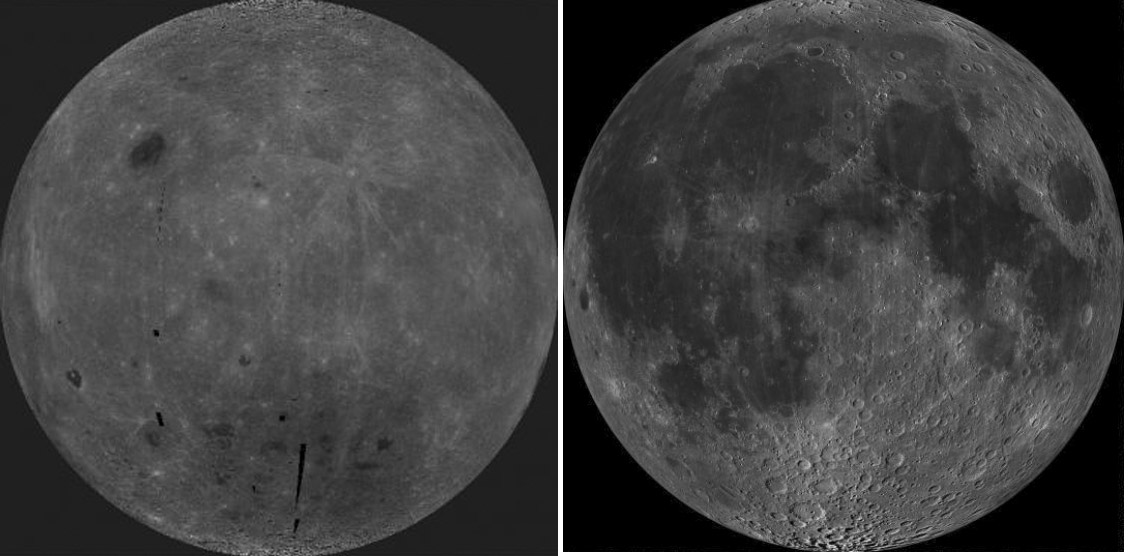November 11, 2024
Extreme Earthshine
Originally published June 13, 2014

farside: Clementine; nearside: LRO
It isn't fair to judge a scientific article by news stories about it, but reports about a new article are full of such misunderstanding that I am going to discuss it. The journal Astrophysical Science Letters has recently published an article by three astrophysicists from Pennsylvania State University explaining why the lunar far side has a thicker crust than the nearside. I have read the article (the abstract is available) which does say all the things in the news reports. Most of the reports I've seen are very similar to this one from India. The authors propose that the greater thickness of the far side crust is primordial, relating to the formation of the Moon itself. They posit that just after the early Moon had accreted from debris from a giant impact into the Earth that it was in captured rotation with one side permanently facing Earth. And because the Earth would be thousands of degrees hot from the recent impact, the nearside of the cooling Moon was much hotter than the far side. This would cause preferential condensation of aluminum and calcium on the cooler far side, building up the thicker crust. The news stories say: Earlier in its history, large meteoroids struck the nearside of the Moon and punched through the crust, releasing the vast lakes of basaltic lava that formed the nearside maria that make up the man in the Moon. This is wrong, as Gene Shoemaker showed about 50 years ago. Impacts did not free magmas from below the crust; the magmas arose much later from melting due to radioactivity that mostly occurred 0.5 to 1 billion years after the end of basin formation. The news stories also say that there are few farside mare deposits because of the thicker crust there. Yet the biggest basin - the South Pole - Aitken Basin - excavated more deeply than any nearside basin. Magma was not waiting below the crust just ready to be released. The authors do not mention KREEP, the material under the nearside Imbrium/Procellarum/Serenitatis area that is rich in radioactive materials that caused the melting to generate much of the nearside lunar maria. The news stories say totally incorrect things not in the article itself, although the article includes quotes from the authors. The theory, as presented in the professional publication, seems naïve about the geochemical knowledge of the Moon, but the new articles make the theory seem completely wrong, at least to a lunar scientist. Don’t trust what you read in the news.
Chuck Wood
Yesterday's LPOD: HDR Eyes
Tomorrow's LPOD: Eyeing Us
COMMENTS?
Register, Log in, and join in the comments.



